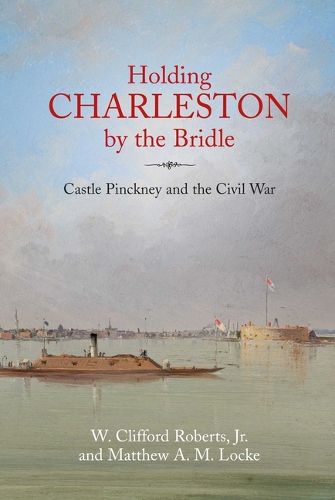Holding Charleston by the Bridle
W. Clifford Roberts, Jr

Holding Charleston by the Bridle
W. Clifford Roberts, Jr
On the eve of the Civil War, the London Times informed its readers that Castle Pinckney has "been kept garrisoned, not to protect Charleston from naval attack from the ocean, but to serve as a bridle upon the city." Located on a marshy island in the center of Charleston's magnificent harbor, the large cannons on the ramparts of this horseshoe-shaped masonry fort had the ability to command downtown Charleston and the busy wharves along East Bay Street. This inescapable fact made Castle Pinckney an important chess piece in the secession turmoil of 1832 and 1850, and in the months leading up to the 1861 bombardment of Fort Sumter.
Now in paperback, Holding Charleston by the Bridle: The History of Castle Pinckney from 1811 Through the Civil War to the Present Day by Cliff Roberts and Matthew Locke is the first book on the subject, from the fort's innovative design as part of America's "Second System" of coastal fortifications to the modern challenges of preserving its weathered brick walls against rising sea levels. The impressive bastion was constructed as a state-of-the-art seacoast fortress on the eve of the War of 1812. President James Monroe and Gens. Winfield Scott, Robert E. Lee, and P. G. T. Beauregard inspected its casemates and barracks. The history of Pinckney is as impressive as its list of visiting VIPs.
Defending the fort was one of Winfield Scott's major concerns during the Nullification Crisis of 1832. Seminole Indians and Africans from the illegal slave ship Echo were held there. In 1860, Maj. Robert Anderson knew the fort was the key to protecting his small Federal garrison at Fort Moultrie, but his requests to Washington for troops to hold the Castle went unheeded. That December, three companies of Charleston militia scaled and seized the fort in a daring act that pushed the nation to the edge of civil war. After First Manassas (Bull Run), 156 captured Yankee officers and enlisted men were sent to the island, and in 1863, members of the famed 54th Massachusetts were held there as POWs. The fort's guns helped defend the city during the war's longest siege. By 1865, the old fortress had been transformed into an earthen barbette battery with a rifled Brooke gun and three giant 10" Columbiads. During Reconstruction, the Castle became an "American Bastille" for Southerners accused of crimes against the government.
Roberts and Locke rely on extensive primary research and archaeological evidence to tell the full story of the Castle for the first time. Given its importance to America's history, it is a history long overdue.
Order online and we’ll ship when available (15 May 2025)
Our stock data is updated periodically, and availability may change throughout the day for in-demand items. Please call the relevant shop for the most current stock information. Prices are subject to change without notice.
Sign in or become a Readings Member to add this title to a wishlist.


